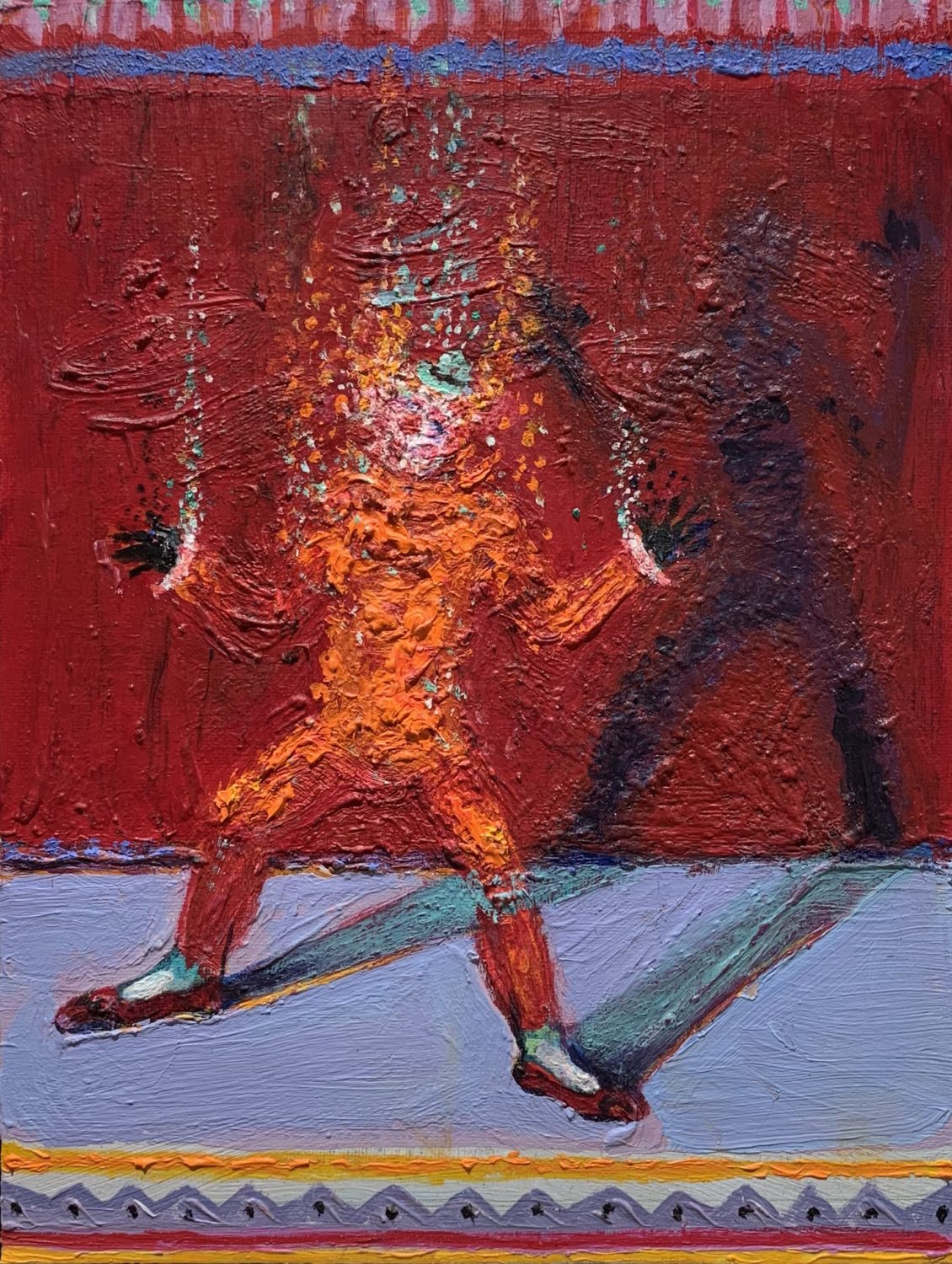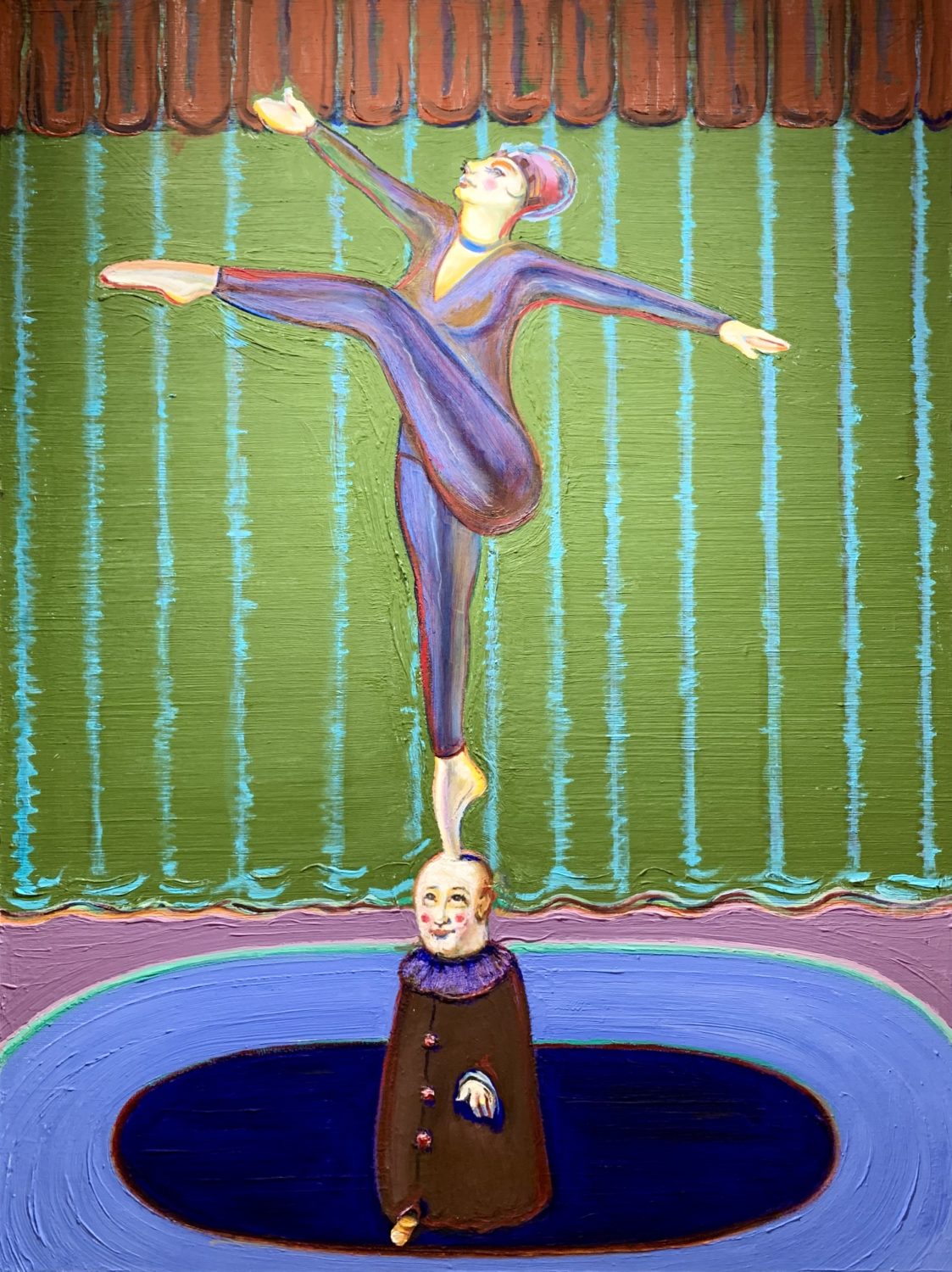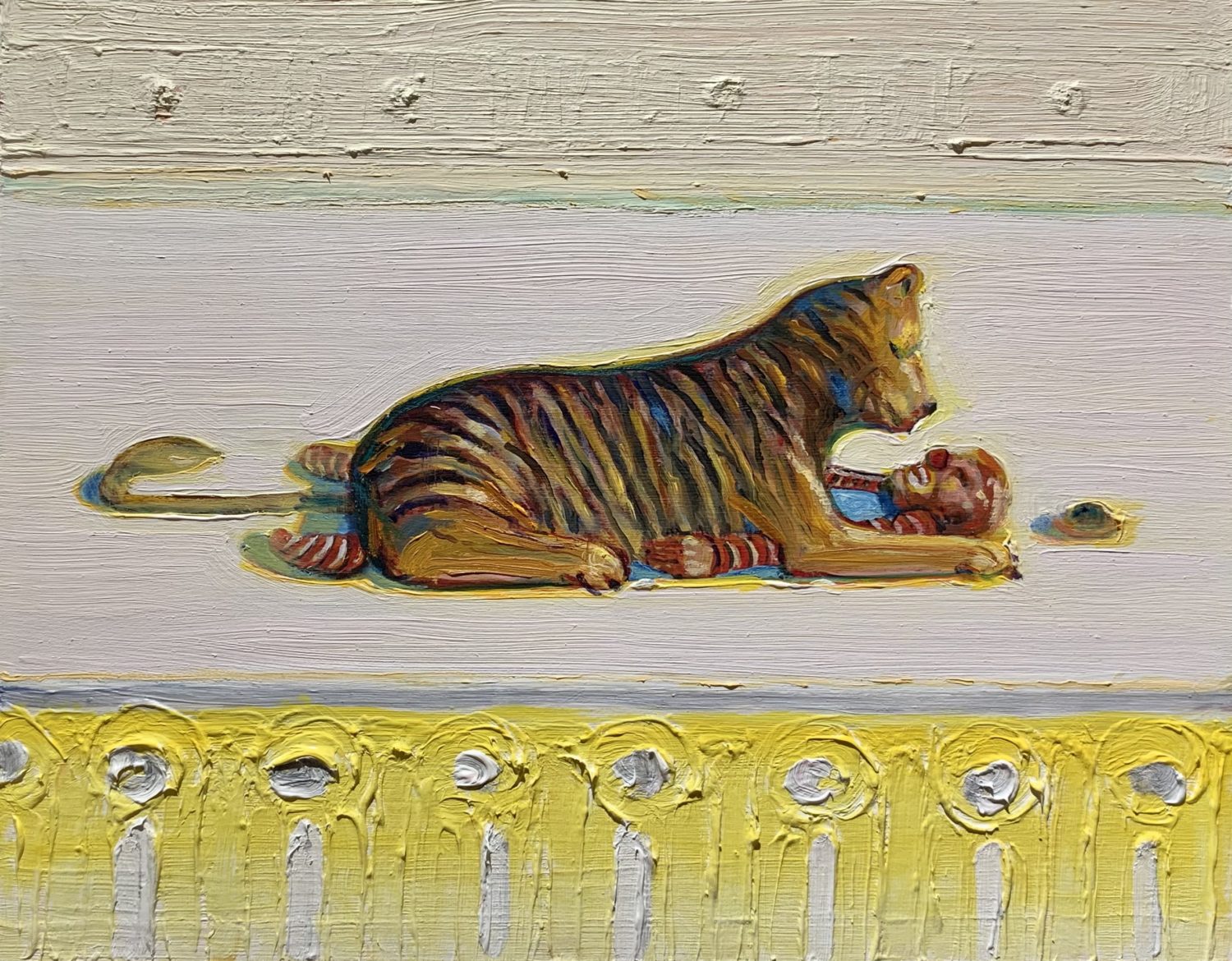Clowns pique our imaginations and memories. They also reflect the panoply of human emotions, from despair to pathos, to delight, to jubilation. Indeed, clown portraits pervade art history, going back to modern art, as with the work of Picasso, to the Renaissance and to the Middle Ages, with artists from the latter often drawing clowns as caricatures. Clown portraits as parodies of humanity delight us all, from the very young to the very old.
It is fitting then that “Wayne Thiebaud: Clowns” is on exhibit at the recently re-opened Laguna Art Museum. The compelling background to this show is that these portraits were created by 100-yeard-old Wayne Thiebaud, a California native who has been called the quintessential American painter.

Wayne Thiebaud, Clowns
While Thiebaud is well-known for his whimsical still-life paintings of pies, cakes and desserts, his clown portraits represent an entirely new series – which he began working on just seven years ago to deal in part with recent family difficulties.
Looking back to his childhood in Long Beach, Thiebaud explains that he often visited the traveling Ringling Brothers Barnum and Bailey Circus, and even worked there to “bring water to the elephants and help the clowns pick up the tent,” as he said in the catalogue accompanying the exhibition. He got to know many Ringling Brothers clowns, delighting in their make-up, behavior and even physical strength. He also worked as an animator at the Walt Disney studios as a very young man, and later as a cartoonist in the Air Force. He employs these early experiences and developed skills in his “Clowns” series.
This exhibition of 56 portraits has several noteworthy aspects. Most clowns are unique in attire, setting and expression. All paintings are based on carefully drawn figures, an aspect that the artist is known for. Many figures are placed in settings that are unusual, even for clowns; for example, a tiger pinning a clown to the floor in “Clown and Beast.” And in several paintings, the artist appears to be making fun of the clowns – a reversal of the more traditional clown stance. Yet these sometimes-sardonic portrayals are spontaneous. Or as Thiebaud is quoted as saying in the catalog, “If I make decisions ahead of time I usually get into trouble, so I have to kind of let the painting develop from the ongoing process.”

Wayne Thiebaud, Clowns
One of the most endearing portraits in this exhibition is “Clown and Makeup” of a seated clown, nude from the waist up, smiling peacefully at a plate filled with makeup and a brush. The artist said that this piece, “is probably the most puzzling painting for me. Can’t quite figure what that is.”
“Clown Disintegrating” features a clown attired in red set against a red wall, as bits and pieces of the figure are dissolving into the atmosphere. The brushwork in this painting echoes the dissolving aspects of impressionism, demonstrating the artist’s mastery of a range of styles.

Wayne Thiebaud, Clowns
“Clown with Two Cigars” depicts a fierce-looking dark-skinned creature with a green brimmed hat and suspenders, and with cigars spewing smoke protruding from both sides of his mouth. The contrasting “Clown Juggler” is a joyous figure, juggling three pies while wearing a face mask.
The exhibition also presents “Clown Boots,” illustrating clown faces, one smiling and one frowning, adorning two boots; “Clown Tie” of a tie decorated with a clown face; and “Clown Cloud” with a tall cloud showering rain on a small, dejected clown.
A few paintings contain clowns in boxes. In “Boxed Clown,” the poor clown has fallen into a large circus box, with only his long colorfully clad legs and one hand holding an American flag hanging out. In another, two dejected clowns are descending into a box. Yet the artist claims to not know why he portrays his subjects in certain ways. Or as he says in the catalog, “It’s always a kind of desperate journey and a fascinating one and that’s what I think keeps me going.” Still, these portraits suggest the plight of clowns and of the larger humanity as being boxed into desperate situations. Several paintings of dejected circus performers in this show are balanced by three others titled “Bumping Clowns,” all of airborne clowns hurtling toward each other with their faces about to collide.

Wayne Thiebaud, Clowns
The show also exhibits finely detailed paintings of graceful female circus performers. “Woman on a Ball” showcases a woman wearing turquoise pumps, G-string, skimpy bra, long gloves and a mask, as plumes of colored smoke – or perhaps feathers – emanate from her head. “Clown with Ballerina” illustrates a stylish dancer with one toe balanced atop the head of small, mindful clown. These two are among a handful of paintings expressing the more elegant aspects of circuses, particularly those of the one-ring genre.
As our museums and galleries open up, it is gratifying to see a museum exhibiting art that is approachable to novices and art aficionados, featuring a centuries-old, enduring subject.
Laguna Art Museum, Laguna Beach; Mon.-Tue., Thur.-Sun., 11 a.m.-5 p.m.; “Wayne Thiebaud: Clowns” on view through October 24, 2021; advance tickets for timed entry, available on the museum’s website, are required with capacity limited to 25 percent. lagunaartmuseum.org

Wayne Thiebaud, Clowns
Advertising disclosure: We may receive compensation for some of the links in our stories. Thank you for supporting Irvine Weekly and our advertisers.

